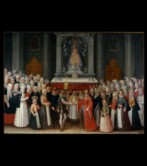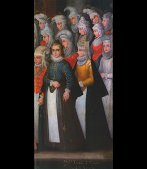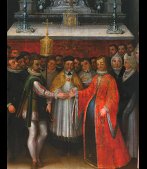The noble woman
The social position of a noble woman in Gipuzkoa under the Old Regime should be understood within the ideology of the time, which was not based on individual rights and social equality, but rather in the duties and rights of the House – the source of people’s social status - and on the inequality that was the norm within the family.
The priority, which took precedence over individual interests, was the continuation of the House, as a social entity and as a viable economic unit. For this reason, every member of the household had a role that they had to fulfil if they were to earn the protection and acceptance of the household. Given that the continuation of the House was a priority, in general only one person inherited, and the rest was not divided up in an equal manner, but according to the necessities and desires of the etxeko jaun or the etxeko andre (master or mistress of the house). The principal heir was freely chosen, and the daughters of the house were also eligible if they could show that they were capable or if they were their parents’ preferred option. One of the characteristics of succession in Gipuzkoa is that what was the norm there was the exception in Castile: a freely chosen main heir rather than equal division of the inheritance.
As a result, Gipuzkoa found itself a legal difficulties because Castilian law in general prohibited female inheritance. The custom continued, but in the case of someone taking legal recourse, than the free choice was in the balance. The way of getting around this obstacle was succession during one’s lifetime, which consisted in passing on the title not on the death of a couple that owned it, but on the occasion of the marriage of the person chosen to continue as head of the family line, stipulating in the marriage vows the rights related to the married couple, and those corresponding to younger or unmarried members of the household. Thus marriage in general, and especially those that involved succession, were survival strategies and, as far as possible, were contracted in the interests of the house in question. In this respect it would be truer to say that, rather than “marrying somebody”, it was a case of “marrying a House”.
In this society, a woman reached the top of the social pyramid when she achieved the title of etxeko andre or mistress of the house (especially if she was a descendent of the house and her husband had come from outside). She thus obtained status in the eyes of the rest of the household, regardless of their gender, and also in the rest of the local community. She was excluded from political power in the local council, but not religious power, in that she had a say, as the representative of the House, in the choice of priests or who was favoured locally. It was also of course, the place where she was buried.




